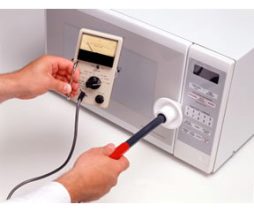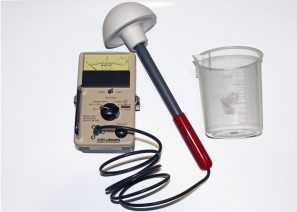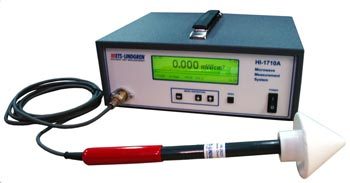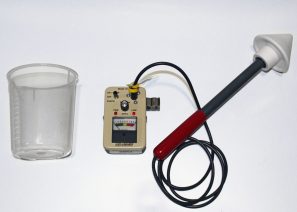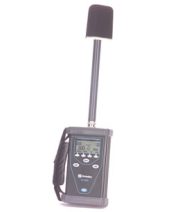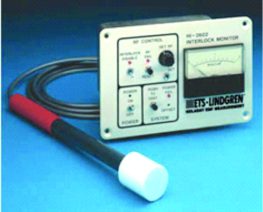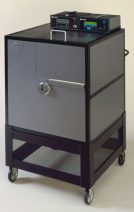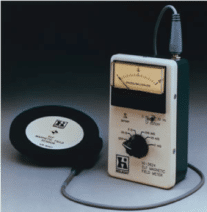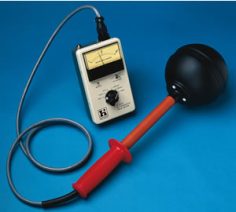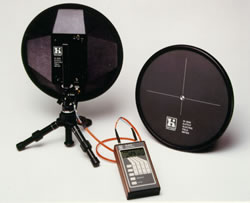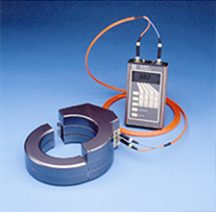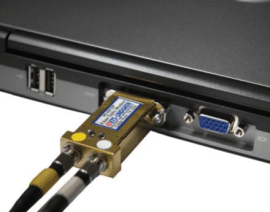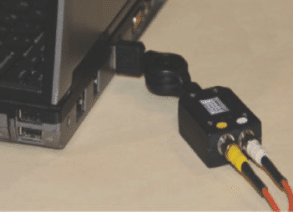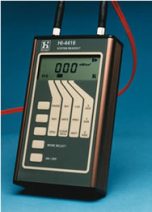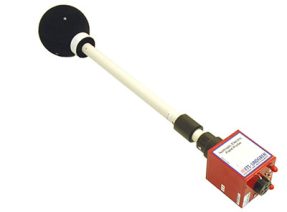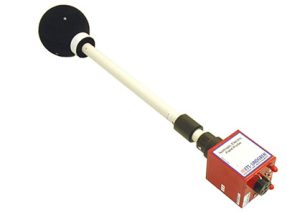Electromagnetic Compatibility (EMC) /
Radiation Hazard Monitoring
Radiation hazard monitoring is a critical process that involves detecting and measuring potentially harmful levels of radiation in various environments. Radiation can come from a range of sources, including nuclear power plants, medical facilities, and industrial activities, and it is essential to monitor these sources to ensure the safety of both workers and the public.
The monitoring process typically involves the use of specialized equipment, such as Geiger counters, which can detect and measure the level of ionizing radiation in the environment. This equipment is typically operated by trained professionals who regularly monitor areas around radiation sources, such as nuclear power plants or medical facilities, to ensure that radiation levels remain within safe limits.
In addition to monitoring radiation levels in the environment, radiation hazard monitoring also involves monitoring workers who may be exposed to radiation as part of their job. This can involve regular health screenings and monitoring of radiation levels in their work environment to ensure that they are not being exposed to harmful levels of radiation.
There are also a number of regulations and guidelines in place to ensure the safety of workers and the public when it comes to radiation exposure. These guidelines are typically set by government agencies and international organizations and are designed to ensure that radiation levels are kept within safe limits.
Radiation hazard monitoring is a critical process that involves detecting and measuring potentially harmful levels of radiation in various environments. Radiation can come from a range of sources, including nuclear…
...power plants, medical facilities, and industrial activities, and it is essential to monitor these sources to ensure the safety of both workers and the public.
The monitoring process typically involves the use of specialized equipment, such as Geiger counters, which can detect and measure the level of ionizing radiation in the environment. This equipment is typically operated by trained professionals who regularly monitor areas around radiation sources, such as nuclear power plants or medical facilities, to ensure that radiation levels remain within safe limits.
In addition to monitoring radiation levels in the environment, radiation hazard monitoring also involves monitoring workers who may be exposed to radiation as part of their job. This can involve regular health screenings and monitoring of radiation levels in their work environment to ensure that they are not being exposed to harmful levels of radiation.
There are also a number of regulations and guidelines in place to ensure the safety of workers and the public when it comes to radiation exposure. These guidelines are typically set by government agencies and international organizations and are designed to ensure that radiation levels are kept within safe limits.
-
Frequency: 2450 MHz The HI-1501 is ETS- Lindgren’s most popular Microwave Oven Leakage Meter. The device provides accuracy and portability for...FIND OUT MORE
-
Frequency: 915 MHz & 2450 MHz The model HI-1600 Microwave Meter measures microwave leakage from microwave devices operating at 2450 MHz or 915...FIND OUT MORE
-
Frequency: 2450 MHz The HI-1710A combines the proven and reliable diode sensing technology of the Holaday Microwave Survey Meters with the digital...FIND OUT MORE
-
Frequency: 2450 MHz A durable, compact and portable instrument, the HI-1801 meter is especially suited to appliance service applications. The CHECK...FIND OUT MORE
-
Frequency Range: Depends on Probe Selected A simple solution for basic RF safety measurements, the HI-2200 RF Survey Meter provides a compact...FIND OUT MORE
-
Frequency: 2450 MHz The ETS Lindgren HI-2602 Interlock Monitor provides continuous surveillance of microwave fields for protection of personnel and...FIND OUT MORE
-
Frequency: 2450 MHz The ETS Lindgren HI-2790B Calibration Comparison System complies with US Government (CDRH/FDA) requirements for evaluating...FIND OUT MORE
-
Frequency Range: 30 Hz – 2000 Hz The HI-3604 ELF Survey Meter is designed to evaluate both electric and magnetic fields associated with 50/60Hz...FIND OUT MORE
-
Frequency Range: 5 (30) Hz – 2000 Hz The ETS-Lindgren HI-3624(A) ELF Magnetic Field Survey Meter is an affordable, easy to use magnetic meter for...FIND OUT MORE
-
Frequency Range: 5 Hz – 200 Hz The HI-3627’s remote sensor and meter make quick work of determining ELF magnetic field distributions in various...FIND OUT MORE
-
Frequency Range: 5 Hz – 400 kHz Meets Swedish MPR Band I and II Requirements. Full ELF and VLF capability to the Swedish MPR and the IEEE 1140 test...FIND OUT MORE
-
Frequency Range: 9 kHz – 70 MHz The HI-3702 Induced Current Meter measures RF induced body currents using a clamp-on current sensor, sized for a...FIND OUT MORE
-
The HI-4413P and ProbeView II” software provides extensive data gathering and display options for any fibre optically coupled Holaday probe. It...FIND OUT MORE
-
The HI-4413USB Fibre to USB Converter is an economical way to collect and display data from all of the ETS-Lindgren EMC optically coupled field...FIND OUT MORE
-
The HI-4416 Numeric EMF Readout is a versatile device for use with HI-44XX series, HI-3702 and HI-3638 fibre optically coupled electric and magnetic...FIND OUT MORE
-
Frequency Range: 500 kHz – 5 GHz The HI-4433 series probes feature Automatic Continuous Zeroing. This facility removes the need for internal zero...FIND OUT MORE
-
ETS-Lindgren’s HI-4433-MSE Electric Field Probe measures electric field strength and provides X, Y and Z as well as total field values. Data...FIND OUT MORE
-
Frequency Range: 500 kHz – 5 GHz The HI-4433 series probes feature Automatic Continuous Zeroing. This facility removes the need for internal zero...FIND OUT MORE

